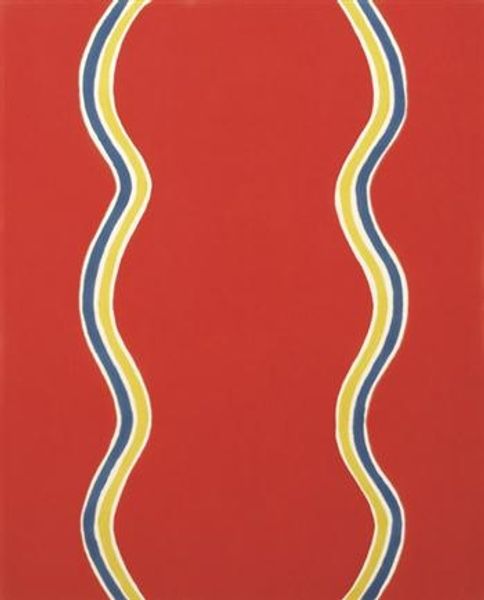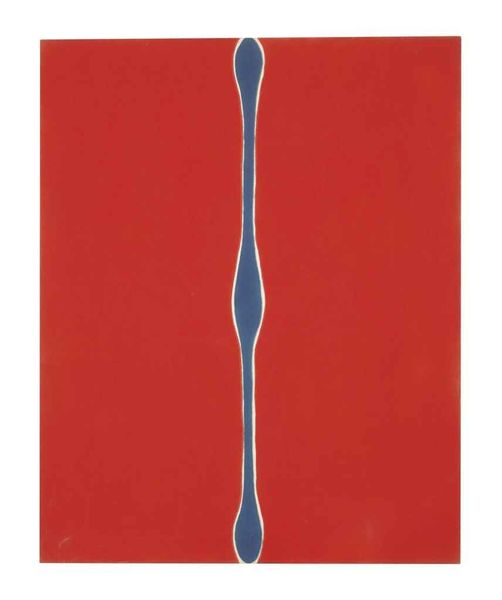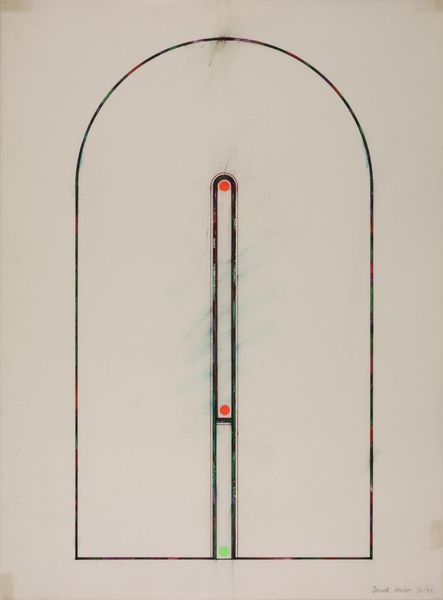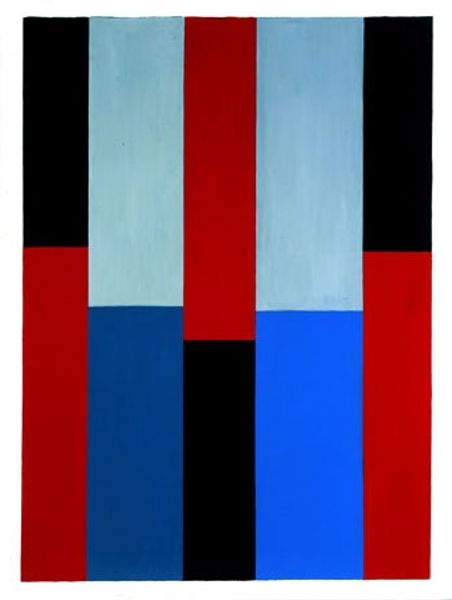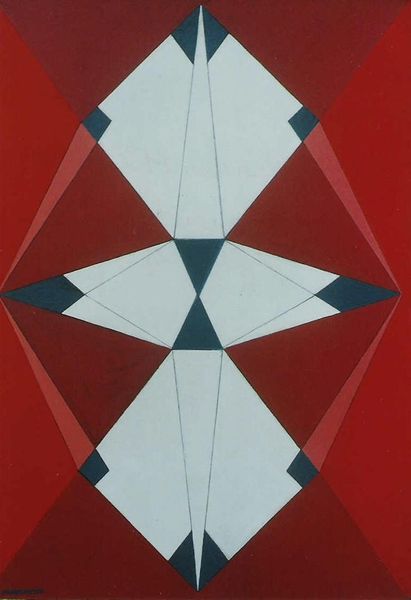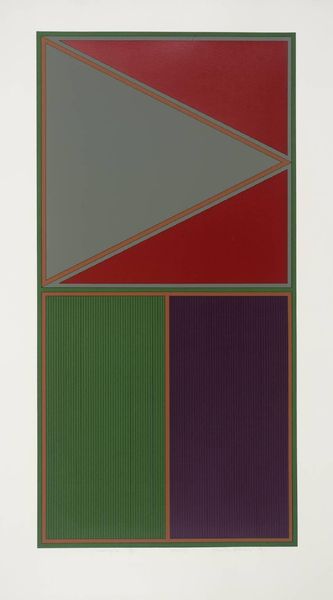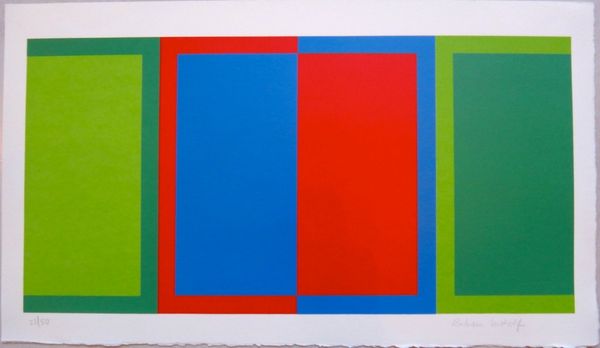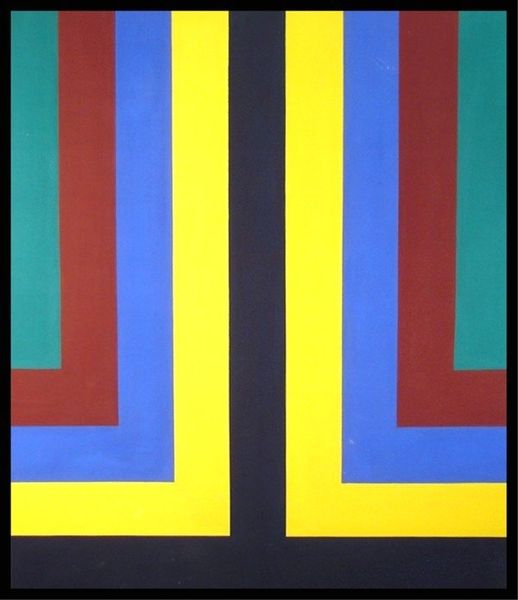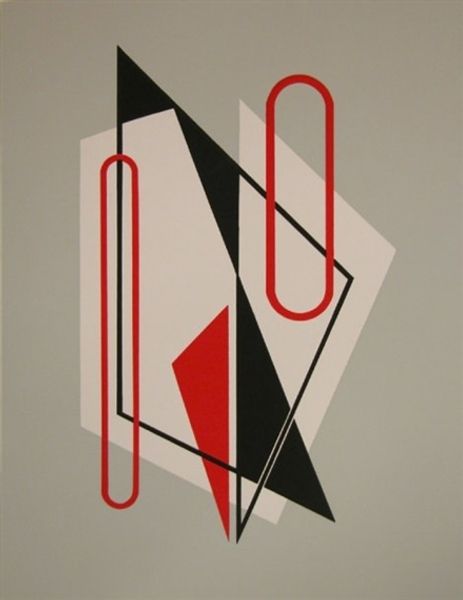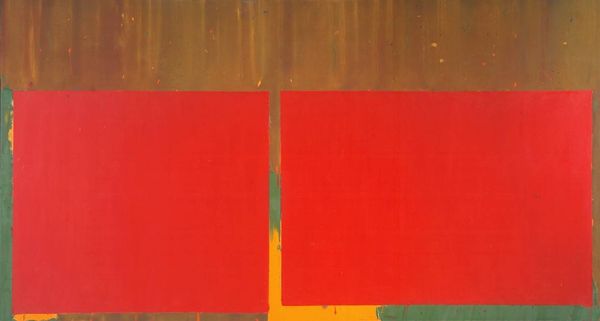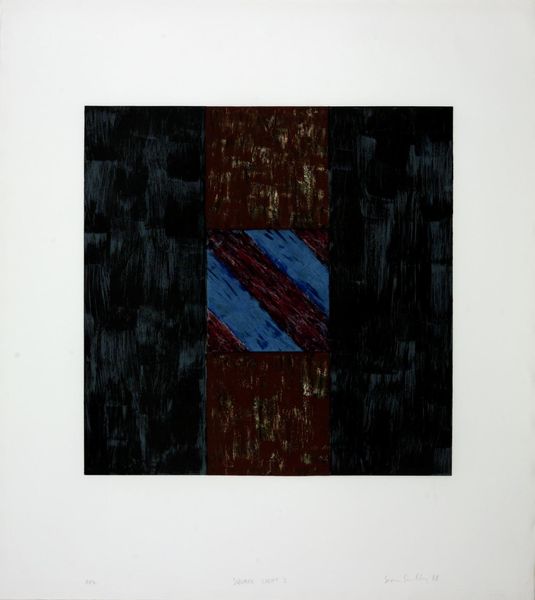
Copyright: Funasaka Yoshisuke,Fair Use
Curator: This mixed-media piece, titled "843," was created by Funasaka Yoshisuke in 1984. Looking at it, what strikes you first? Editor: Hmm, visually? The red field is dominant, of course. Bold, almost aggressive. The little curvy lines floating in front feel a bit precarious, like they're about to fall off a cliff. Curator: Precarious is a great word. There's a tension between that imposing red rectangle, a rigid field with suggestions of further structuring beneath, and those organic lines you mentioned, each rendered in a different color. I’m curious about Yoshisuke’s layering of the acrylic paint and ink – you see the grid faintly scored into that background, how would you characterize that tension for yourself? Editor: It’s as though these colourful squiggles, applied with some inky brush, attempt to push past or destabilize the cold, rigid perfection implied by the pure shapes in "colour field painting". But not violently. It's a subtle rebellion, a whisper of individuality. Does it imply, I wonder, something of the political landscape of the time it was created? A search for more individualized voice within a stricter frame. Curator: That's insightful, connecting it to the social context of production. Yoshisuke lived through immense changes in Japan during the 20th century, observing firsthand the shift from traditional craft production towards increasingly industrial methods. Those playful forms against the field could represent a reclamation of something hand-wrought and individual within the broader social frame of mechanization. Editor: I hadn’t quite thought of it that way, the labor implicit, or perhaps explicit, within its material composition. But that tension – a push against the monochrome by more vivid colors -- maybe that's what resonates with me the most. Thank you for clarifying that social framework. Curator: Thank you! Considering Yoshisuke’s career and dedication to form, color, and medium, understanding these elements helps us see what isn't present as clearly as we see what is, broadening our connection with his artistic voice.
Comments
No comments
Be the first to comment and join the conversation on the ultimate creative platform.
